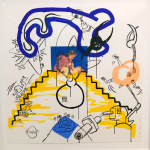A recent CDC report documented a case of HIV infection in three women who received cosmetic injections in 2018. Although disturbing, this news is not catastrophic, like it would have been three decades ago. AIDS is now largely a forgotten disease in the United States. How did we get here?
HAART
Sports fans will never forget the day in 1991 when L.A. Lakers star Earvin "Magic" Johnson announced that he was infected with HIV. Johnson was lucky; he survived long enough to see the advent of the first effective AIDS drugs. But not everyone was so lucky.
If there is a better example of the law of unintended consequences we have never seen it.
The incredibly successful battle against HIV/AIDS has saved many lives, and will no doubt continue to save many more. Once HAART (highly active antiretroviral therapy) drugs, aka cocktails, became available in 1995, there was a steep drop in the number of AIDS deaths in the US.
UNAIDS report 2000: A decade ago, HIV/AIDS was regarded primarily as a serious health crisis. Estimates in 1991 predicted that in sub-Saharan Africa, by the end of the decade, 9 million people would be infected and 5 million would die a threefold

